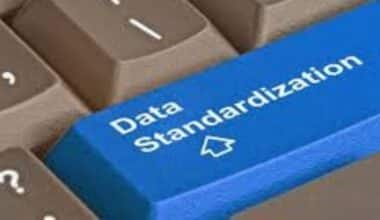Programmers, developers, and other professionals create software and systems using a variety of tools, including scripting languages. Scripting languages are programming languages that an interpreter program converts into code that a computer program can understand. Understanding scripting languages and their various types can help you become more acquainted with the tools that can help you become a better programmer. In this article we will discuss all about scripting and its connection with terms like programming, autism, manifestation and cyber security. You will also get some basic facts on scripting.
What is Scripting?
A scripting language (also spelled scripting or script) is a collection of commands that can be run without the need for compilation. While all programming languages are scripting languages, not all scripting languages are programming languages.
This languages use an interpreter program to translate commands and are interpreted directly from source code, eliminating the need for a compilation step. Other programming languages, on the other hand, may necessitate the use of a compiler to convert commands into machine code before they can be executed.
To broaden your understanding of coding, it is critical to understand the distinction between interpreted and compiled programming languages. However, advances in hardware and coding practices are making the distinction obsolete. This languages are used to provide instructions to software programs, such as those found on websites.
What Is Scripting Used For?
What is the purpose of scripting if programming is used to create new programs? Scripting is most commonly used to automate tasks for websites and web applications by utilizing an existing program. It can be used to extract information from a dataset. This skills are used in the careers of computer programmers, software developers, front-end and back-end developers, and others.
Python, one of the most popular scripting languages, is used in a variety of businesses, including Uber, Facebook, and Netflix. This languages are heavily used in the technology industry.
Scripting is demonstrated by the language used in Microsoft Excel. Some of these functions include automatic column addition and other mathematics. Text-to-speech applications and cloud data management also make use of scripting languages.
Types of Scripting Languages
This languages are classified into two types: server-side and client-side.
They differ in terms of where the code is executed, which affects not only the languages chosen, but also their performance and capabilities.
#1. Server-side scripting language
Server-side scripting languages are those that run on a web server. The script is not visible to the visitor because it operates from the back end. As a result, it is a more secure approach.
They are frequently used to build dynamic websites and platforms, handle user queries, generate and provide data, and so on. The use of PHP in WordPress is a well-known example of server-side scripting.
PHP, Python, Node.js, Perl, and Ruby are some examples.
#2. Client-side scripting language
Client-side scripting languages, in contrast to the preceding, run on the user’s browser.
It is usually done on the front end, where it is visible to visitors and less vulnerable to exploits and leaks. As a result, it is frequently used to create user interfaces and other lightweight functionality.
Because it runs locally, it usually provides better performance and does not strain your server.
HTML, CSS, jQuery, and JavaScript are some examples.
Examples of Scripting Languages
#1. JavaScript.
By far the most popular language is JavaScript. According to Statista, it is the most widely used programming language in the world. As a result, learning JavaScript will provide you with a plethora of job opportunities.
#2. PHP.
PHP is a general-purpose language that excels in web development. It can be used to create graphical user interfaces and is compatible with all major operating systems.
#3. Python.
Python is one of the most straightforward languages to learn. It is employed in task automation, website development, and data analysis.
#4. Perl.
Perl was originally designed for text manipulation, but it is now used for a wide range of tasks. It is now commonly used to manage databases.
#5. Ruby.
Ruby is an object-oriented programming language that is used by many large corporations today.
Pros and Cons of Scripting Languages
Because scripting languages are open source, you can collaborate with users all over the world to improve them.
Scripting languages have numerous advantages over other programming languages. For starters, they are open-source. This allows users from all over the world to contribute to the process of improvement. Other advantages include the following:
- There is no need to compile, though it may be necessary on occasion.
- It is simple to switch between operating systems.
- Scripting languages improve the appearance of web pages.
- The syntax is simpler to understand and write.
- Scripts can be used as a program prototype, saving time on test projects.
There aren’t many disadvantages to using this languages. One disadvantage is that some businesses do not want their scripts to be read by everyone, so they use server-side scripts to avoid releasing them to the public. Installing an interpreter program can also be difficult. Finally, scripts can be slower than programming languages at times.
What is Scripting vs Coding?
Scripting and coding are not the same thing, but they are very close. Though both are used in the backend of websites and applications, there are significant differences between scripting and programming languages. The main distinction is in how they are used.
A programming language enables you to create a new program, whereas a scripting language enables you to provide instructions for an existing program. This adds functionality, whereas coding adds structure.
What is Scripting in Cyber Security?
Scripts can be used by attackers in a variety of ways to carry out cyber attacks. They may, for example, run scripts directly on a target computer or include them in PDF and Office documents emailed to the victim.
Using scripts provides attackers with several advantages, including ease of writing and execution, ease of obfuscation, and high levels of polymorphism. Furthermore, attackers have access to a wide range of script file formats, the most common of which are PowerShell, JavaScript, HTML Application, Visual Basic for Applications, Visual Basic Script, and batch scripts.
The language attacks include the following:
#1. PowerShell
A phishing attack is used to trick the victim into downloading a PDF file in this type of attack. When the victim opens the file, hidden PowerShell scripts run, bypassing security measures and corrupting memory. This gives the attacker access to the targeted system as well as privileges and permissions.
#2. JavaScript
JavaScript and other standard scripting languages are widely used in browsers, web pages, and web applications. This language can be used to manipulate and change PDF files by adding objects, links to web pages, and other features. The majority of PDF-based attacks employ JavaScript code that is executed on the victim’s computer via PDF reader software or an in-browser reader.
#3. HTML Application (HTA)
Malicious HTA files grant scripts local user rights to the computer, allowing them to download and run additional executables or scripts. HTA files, despite being an outdated attack vector, are still commonly used in script-based attacks. These files could be downloaded by another script, sent as attachments, or accessed via malicious website redirection.
#4. VBScript
VBScript (Microsoft Visual Basic Scripting Edition) is a scripting language developed by Microsoft that is based on VBA (Visual Basic for Applications). In contrast to VBA, which allows for full program development, VBScript focuses on job automation for system administrators. VBScript, which is similar to PowerShell and is frequently used in script-based attacks, is frequently used for comparison purposes. Another factor that attracts attackers is Microsoft’s support for script encoding in the form of VBE files.
Who uses Scripting Languages?
Here are a few examples of professionals who use this languages at work.
#1. Web developer
A web developer’s primary responsibilities include creating and maintaining websites by establishing server functionality, storing files and content, improving loading speeds, and addressing bugs. These professionals use server- and client-side scripting languages to create functional webpages.
#2. Systems administrator
A systems administrator’s primary responsibilities include assessing servers and overall systems to identify and correct errors, updating security measures and functionality, and installing and maintaining networks. Scripting languages may be used by these professionals to generate data from servers, run commands, and automate processes for the client-side program.
#3. Programmer analyst
A programmer analyst’s primary responsibilities include designing, maintaining, and testing software or computer systems to ensure they are highly functional and operate correctly. Scripting languages are used by these programmers to create concise commands, ensure that systems display content, and automate specific tasks that allow content to display.
#4. Application developer
An app developer’s primary responsibilities include designing, coding, updating, and maintaining a software application, such as one for a mobile device. They use scripting languages to ensure that client-side content and interactive elements are accessible via the server-side program.
#5. Software engineer
A software engineer’s primary responsibilities include developing and maintaining systems and software, such as computer systems, networks, and operational software for specialized technology such as medical devices. Scripting languages may be used to automate processes, create functional interfaces, and run software requirements tests.
How do I Learn Scripting?
We recommend that you find a language that appeals to you and then enroll in a programming bootcamp that focuses on that language.
A programming bootcamp is beneficial because it not only teaches you how to code but also prepares you for a career in technology. Most programming bootcamps last less than a year and offer career services as well as various payment options, allowing people of all backgrounds to begin a career in the tech industry.
Learning a scripting language is the simplest way to get started in the world of coding. There are numerous resources available to assist you in trying each one until you find one that makes sense to you. Just remember to take it slowly, to be patient with yourself, and to begin with small projects rather than large ones. It is also advisable to begin with an easy-to-learn scripting language, such as Python.
Which Language is Scripting?
Scripting languages are a subset of computer languages that can be used to communicate with other software, such as a web browser, server, or standalone application. Many of today’s most popular coding languages.
What do you Mean by Scripting?
This language, in more detail, is a type of coding that automates various step-by-step functions or processes. Otherwise, these instructions would have to be manually entered by a developer. Other types of coding (for example, CSS or HTML, to name a few) may instruct a computer on how to display a website.
What is Scripting in Programming?
This is most commonly used to automate tasks for websites and web applications by utilizing an existing program. It can be used to extract information from a dataset. Scripting skills are used in the careers of computer programmers, software developers, front-end and back-end developers, and others.
What is an Example of Scripting?
Examples of this languages include Ruby, Python, and a host of others mentioned above. Programming languages are all scripting languages, but not all scripting languages are programming languages.
What is the Best Scripting Language to Learn?
Python is the best scripting language to learn because it is simple to learn and is widely used in many industries. Furthermore, Python is worth learning because it can be used for a variety of tasks such as data visualization, task automation, and website development.
Is SQL a Scripting Language?
SQL is a scripting language that is widely used for data management. This language, as a fourth-generation language, employs interpreters rather than compilers. SQL, which stands for Structured Query Language, is a programming language that is commonly used for communicating with databases and storing backend data.
Conclusion
Consider scripting to be a subset of coding, and scripting languages to be a subfamily of programming languages. As we’ve seen, this language is commonly used in web development to create dynamic, responsive experiences and to generate pages from templates.
Scripting languages are used to create mobile and desktop apps, manipulate large data sets, automate deployments, and orchestrate machine learning utilities, among other things. A script requires another program to run in all cases.
Related Articles
- Door Knocking: Best 2023 Real Estate Practices (+ Free Script Strategies)
- PYTHON LOGO: Who Designed the Python Logo and Its Meaning
- BEST WEBSITE TO LEARN CODING FOR BEGINNERS IN 2023
- Top 5 Cold Calling Tips For Successful Sales
- DATA ENGINEER: Skill Requirement And 2023 Salary
- ORGANIC MARKETING: Top Strategies, Benefits & Social Media






